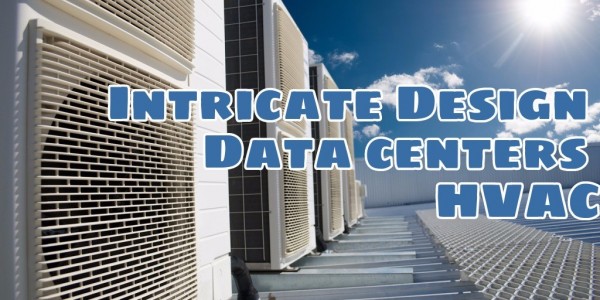In recent years, corporations have expanded their data centers in order to better handle the day-to-day data and processes of their facilities. The optimal range of temperatures for a data center range from 41 degrees Fahrenheit up to 113 degrees Fahrenheit. While very few data centers operate on either extreme end, it was found that data center energy usage is lower when data centers are operated at higher temperatures, and the hardware is more reliable and less prone to temperature swings.
One significant challenge to this, however, is ensuring the comfort of human employees who work in proximity with the data center equipment; a temperature and humidity level that is optimal for data center systems may be too warm for a person to safely work in.
Additionally, ancillary equipment like light fixtures or other electrical components must be checked to ensure they can function properly in higher temperatures to avoid failure. For this reason, a data center’s HVAC unit must not only be kept in good operating order, it must also be able to properly control the hardware’s temperature to ensure optimal functionality.
Cooling
To provide optimal airflow and temperature control, HVAC engineers for data centers will incorporate various means to directly cool hardware or facilitate increased cooling. Some designs, like rack-level cooling, are meant to bring the heat exchange as close to the hardware as possible to allow for transfer and increased cooling.
In drier climates, direct water cooling is used to keep equipment as cool as possible, with the heated return water used to heat labs or other facilities in the building. If the climate is more humid, or there are concerns about air quality or other issues, an indirect cooling system is used that may incorporate polymer or metal heat exchangers.
Existing Data Center Redesign
When redesigning existing data centers for increased usage, special care must be taken to ensure there will be few or no issues with the equipment. Legacy data centers often lack sufficient space for proper HVAC systems to be installed without significant remodeling. If a company wishes to undertake remodeling to expand their data center, it should be conducted in such a way that normal operations are interrupted as minimally as possible.
In the event that remodeling cannot be done, or would be too expensive to undertake, temperature control systems must be designed with those limitations in mind. For example, a data system that has a floor that can only support so much weight may have to have its cooling systems installed on the backs of the cabinets themselves, with the floor acting as a conduit for pipes or other routing to the coils.
Or the floor has to be converted and a plan put in place to install overhead air distribution. Any of these steps can lead to a smaller, more efficient data center footprint, since a data center that runs more optimally can run with less equipment. Additional challenges can be present in supporting mechanical systems that are outside the data center, however.
For example, a data center’s owner may have an internal generator to generate power for the equipment. This generator will need to be constantly monitored to ensure optimal power output, but its monitoring needs to remain relatively robust and simple to operate. Internal generators also have airflow needs of their own in order to function optimally. Increasingly, engineers are relying on CFD software to help them plan for contingencies like this and work around complex airflow challenges.
Katrina is a product specialist, solving issues for your computer server and power needs at Racksolutions.com

